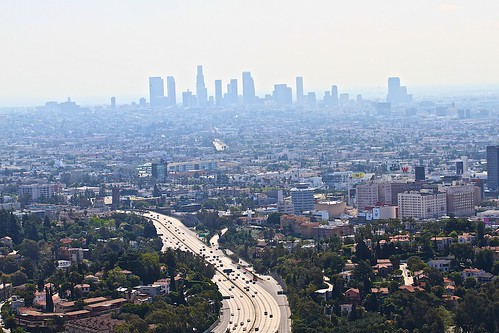ńŠÄÕ£ŗńÆ░õ┐ØńĮ▓’╝łEPA’╝ēµō¼µÅÉķ½śÕ£░ķØóĶ棵░¦ŌöĆŌöĆõ╣¤Õ░▒µś»ÕģēÕī¢ÕŁĖńģÖķ£¦ŌöĆŌöĆńÜ䵩ֵ║¢Ķć│65Ķć│70 ppb’╝īõ╗źõ┐ØĶŁĘÕż¦ń£ŠÕüźÕ║ĘÕÆīńÆ░ÕóāŃĆé
õŠØńģ¦ńŠÄÕ£ŗŃĆŖµĮöµĘ©ń®║µ░Żµ│ĢŃĆŗ’╝īEPAÕ┐ģķĀłµ»Å5Õ╣┤ķ揵¢░Õ»®µĀĖµŁżµ©Öµ║¢’╝īķĆÖµ¼ĪńÜäõ┐«µö╣ÕģČÕ»”ÕĘ▓ńČōµÖܵ¢╝Ķ”ÅÕ«ÜŃĆéńČōńÆ░Õ£śõĖŖĶ©┤’╝īEPAõŠØµ│ĢķÖóńÜäÕæĮõ╗żķ£Ćµ¢╝2015Õ╣┤10µ£łÕēŹÕłČÕ«ÜÕć║µ¢░µ©Öµ║¢ŃĆé
Õ£░ķØóĶ棵░¦µüÉĶć┤µŚ®ķĆØ ÕģÆń½źŃĆüĶĆüõ║║µ£ĆÕÅŚÕĮ▒ķ¤┐
µ▒ĮĶ╗ŖŃĆüÕŹĪĶ╗ŖŃĆüÕĘ┤ÕŻ½ŃĆüÕĘźµźŁÕÆīķø╗Õ╗ĀµÄƵöŠńÜäµ░«µ░¦Õī¢ńē®ŃĆüµÅ«ńÖ╝µĆ¦µ£ēµ®¤Õī¢ÕÉłńē®õ╗źÕÅŖńćāµ¢ÖŃĆüµ║ČÕŖæÕÆīµ▓╣µ╝åńŁēńē®Ķ│¬Õ£©ķÖĮÕģēõĖŗµøصø¼’╝īõŠ┐µ£āÕĮóµłÉÕ£░ķØóĶ棵░¦ŃĆéÕō«Õ¢śµéŻĶĆģŃĆüÕģÆń½źŃĆüĶĆüõ║║ÕÆīÕ£©µłČÕż¢µ┤╗ÕŗĢµł¢ÕĘźõĮ£ńÜäõ║║µ£ĆÕ«╣µśōÕÅŚÕĮ▒ķ¤┐’╝īńø«ÕēŹÕģ©ńŠÄµ£ē1/10ńÜäÕģÆń½źĶó½Ķ©║µ¢ĘÕć║µ£ēÕō«Õ¢śŃĆé
EPAõĖŖõĖƵ¼Īõ┐«Ķ©éÕģēÕī¢ÕŁĖńģÖķ£¦µ©Öµ║¢µś»õŠØ2008Õ╣┤ńÜäÕ£ŗÕ«ČńÆ░Õóāń®║µ░ŻÕōüĶ│¬µ©Öµ║¢µ│Ģ’╝īÕ░浩ֵ║¢õ┐«µö╣ńé║75 ppmŃĆéńäČĶĆīńĀöń®ČµīćÕć║’╝īµÜ┤ķ£▓µ¢╝ńø«ÕēŹµ©Öµ║¢75 ppbõ╗źõĖŗńÜäĶ棵░¦’╝īÕ░▒ÕÅ»ĶāĮÕéĘÕ«│Õæ╝ÕÉĖń│╗ńĄ▒õĖ”Õ╝ĢĶĄĘµł¢µāĪÕī¢Õō«Õ¢śÕÆīÕģČõ╗¢Ķé║ķā©ń¢ŠńŚģŃĆéµÜ┤ķ£▓µ¢╝75 ppbńÜäńģÖķ£¦’╝īĶłćÕøĀÕæ╝ÕÉĖń│╗ńĄ▒õ╗źÕÅŖÕ┐āĶĪĆń«Īń¢ŠńŚģĶĆīĶĄĘńÜ䵌®ķĆص£ēķŚ£ŃĆé
µĀ╣µōÜEPAńÜäÕłåµ×É’╝īÕ░浩ֵ║¢µÅÉķ½śĶć│65Õł░70 ppbµø┤ĶāĮõ┐ØĶŁĘÕģÆń½ź’╝īķĀÉķś▓320,000Õł░960,000õŠŗÕō«Õ¢śńÖ╝õĮ£ÕÆīµĖøÕ░æ330,000Õł░1ńÖŠĶÉ¼Õż®ńÜäÕģÆń½źńŚģÕüć’╝īµø┤ĶāĮķĀÉķś▓ĶČģķüÄ750Ķć│4,300õŠŗµŚ®ķĆØŃĆü1,400Ķć│4,300õŠŗÕō«Õ¢śńøĖķŚ£µĆźĶ©║ńŚģõŠŗ’╝īõ╗źÕÅŖ65,000Ķć│180,000Õż®ÕĘźõĮ£ńŚģÕüćŃĆé
ŃĆīõ╝üµźŁõ╗ŻÕā╣ķüÄķ½śŃĆŹ Õģ▒ÕÆīķ╗©ÕÅŹÕ░ŹµÅÉķ½śµ©Öµ║¢
õĖŹķüÄÕģ▒ÕÆīķ╗©ÕÅŹÕ░ŹµŁżµ©Öµ║¢’╝īĶ¬Źńé║ķĆÖÕ░Źõ╝üµźŁķĆĀµłÉńÜäõ╗ŻÕā╣ķüĵ¢╝µśéĶ▓┤ŃĆé
Õ░ćõ╗╗ÕÅāĶŁ░ķÖóńÆ░ÕóāÕÆīÕģ¼Õģ▒ÕĘźń©ŗÕ¦öÕōĪµ£āõĖ╗ÕĖŁńÜäÕź¦ÕģŗµŗēĶŹĘķ”¼ÕĘ×ÕÅāĶŁ░ÕōĪJames InhofeĶ¬¬’╝īŃĆīEPAńÜäµÅɵĪłÕ░ćķÖŹõĮÄÕ£ŗÕ«ČńÜäńČōµ┐¤ń½ČńłŁÕŖøõĖ”µē╝µ«║µĢĖÕŹüÕ╣┤ńÜäÕ░▒µźŁµ®¤µ£āŃĆéEPAõĖŖõĖƵ¼ĪńÜäĶ棵░¦µ©Öµ║¢’╝īµĀ╣µōÜEPAĶć¬ÕĘ▒ńÜäõ╝░ń«Ś’╝īµ»ÅÕ╣┤Õó×ÕŖĀõ║å900ÕääÕģāµłÉµ£¼ŃĆéŃĆŹ
ńŠÄÕ£ŗń¤│µ▓╣ÕŁĖµ£āõ╣¤õ╗ŻĶĪ©Õģȵ£āÕōĪĶĪ©ńż║ÕÅŹÕ░Ź’╝īõĖ╗Õ╝Ąµ¢░µ©Öµ║¢Õ░Źµ¢╝ÕģȵłÉÕōĪõŠåĶ¬¬Õż¬ķüĵśéĶ▓┤ŃĆé
µśÄÕ╣┤Õ║ĢĶ©éµ¢░Ķ”Å ńŠÄńÆ░ńĮ▓’╝ÜÕüźÕ║ʵĢłńøŖÕ░ćķüĀķ½śµ¢╝µłÉµ£¼
ķØóÕ░ŹÕ£ŗµ£āµ¢░ÕżÜµĢĖÕģ▒ÕÆīķ╗©ÕÆīń¤│µ▓╣ĶłćÕż®ńäȵ░ŻµźŁĶĆģńÜäÕŻōÕŖø’╝īEPAĶĪ©ńż║Õģȵ¢░µ©Öµ║¢õ╣āµś»µĀ╣µōÜĶ┐æµ£¤ĶłćÕ£░ķØóĶ棵░¦µÉŹÕ«│ÕüźÕ║ʵ£ēķŚ£ńÜäÕż¦ķćÅń¦æÕŁĖĶŁēµōÜõŠåÕłČÕ«ÜŃĆé2008Õ╣┤Ķć│õ╗ŖńÜäńøĖķŚ£ńĀöń®ČÕĘ▓ń┤»ń®ŹĶČģķüÄ1,000õ╗ĮŃĆé
EPAÕÅŹµōŖĶĪ©ńż║’╝īµ¢░µ©Öµ║¢ńÜäµĢłńøŖµ£āķüĀķ½śµ¢╝µłÉµ£¼ŃĆéķĆÅķüÄķü┐ÕģŹµ░ŻÕ¢śńÖ╝õĮ£ŃĆüÕ┐āĶć¤ńŚģńÖ╝õĮ£ŃĆüµĖøÕ░æńŚģÕüćÕÆīµŚ®ķĆØ’╝īĶŗźõ╗ź70 ppbńé║µ©Öµ║¢’╝ī2025Õ╣┤µĢ┤ķ½öÕüźÕ║ʵĢłńøŖÕ░ćķüöµ»ÅÕ╣┤64ÕääÕł░130Õää’╝īÕ╣┤Õ║”µłÉµ£¼ń┤äÕ£©39Õää’╝īĶŗźõ╗ź65 ppbńé║µ©Öµ║¢’╝īÕēćĶāĮķüöÕł░190ÕääĶć│380Õää’╝īÕ╣┤Õ║”µłÉµ£¼ń┤ä50ÕääŃĆé
EPAĶ¬¬’╝īĶČŖÕÜ┤µĀ╝ńÜäĶ棵░¦µ©Öµ║¢’╝īÕ░ćµø┤ĶāĮõ┐ØĶŁĘµéŻµ£ēÕō«Õ¢śµł¢µś»Õ┐ģķĀłõĮÅÕ£©µ▒Īµ¤ōÕ£░ÕŹĆńÜäõĮĵöČÕģźÕÆīÕ╝▒ÕŗóÕ«ČÕ║ŁŃĆéEPAÕ░ćÕ£©Ķü»ķé”Õģ¼ÕĀ▒ńÖ╝ĶĪ©µÅɵĪłÕŠī’╝īÕŠĄµ▒éÕģ¼ń£ŠµäÅĶ”ŗ90Õż®’╝īĶłēĶŠ”Õģ¼ĶüĮµ£ā’╝īõĖ”Õ░ćµ¢╝2015Õ╣┤10µ£łńÖ╝ĶĪ©µ£ĆńĄéńēłńÜäĶ棵░¦µ©Öµ║¢ŃĆé
The U.S. Environmental Protection Agency is proposing to tighten air quality standards governing ground-level ozone, or smog, to within a range of 65 to 70 parts per billion (ppb) to better protect public health and the environment.
EPA last updated the health standard for smog, called the National Ambient Air Quality Standard, in 2008, setting it at 75 ppb. The Clean Air Act requires the agency to review this standard every five years, so this proposal is overdue and the agency is under a court order in a case brought by environmental groups to finalize a new standard by October 2015.
In the face of constant attacks by the incoming Republican majority in Congress and by the oil and gas industry, the agency says its proposal for a new, stricter standard is based on ŌĆ£extensive recent scientific evidenceŌĆØ about the harmful effects of ground-level ozone, including more than 1,000 new studies published since the last update.
Ground-level ozone forms in the atmosphere when emissions of nitrogen oxides and volatile organic compounds from cars, trucks, buses, industries, power plants and fumes from fuels, solvents and paints ŌĆ£cookŌĆØ in the sun.
Studies indicate that exposure to ozone at levels even below 75 ppb can harm the respiratory system and cause or aggravate asthma and other lung diseases. Smog exposure at this level is linked to premature death from respiratory and cardiovascular diseases.
People most at risk are those with asthma, children, older adults, and those who are active or work outside. The EPA says stronger ozone standards will provide an added measure of protection for low income and minority families who are more likely to suffer from asthma or to live in communities that are overburdened by pollution. Nationally, one in 10 children has been diagnosed with asthma.
According to EPAŌĆÖs analysis, strengthening the standard to a range of 65 to 70 ppb will provide much better protection for children, preventing from 320,000 to 960,000 asthma attacks and from 330,000 to one million missed school days.
Strengthening the standard to a range of 70 to 65 ppb would better protect both children and adults by preventing more than 750 to 4,300 premature deaths; 1,400 to 4,300 asthma-related emergency room visits; and 65,000 to 180,000 missed workdays.
But Republicans in Congress object to the proposed standards as too expensive for industry. Senator James Inhofe, an Oklahoma Republican who will chair the Senate Environment and Public Works Committee when Congress reconvenes in January, said, ŌĆ£EPAŌĆÖs proposal to lower the Ozone National Ambient Air Quality Standard to between 65 parts per billion and 70 ppb will lower our nationŌĆÖs economic competitiveness and stifle job creation for decades.ŌĆØ
ŌĆ£The EPAŌĆÖs previously proposed ozone standard came with a price tag of up to $90 billion per year, by EPAŌĆÖs own estimation,ŌĆØ said Inhofe.
EPA says that the benefits of meeting the proposed standards will far outweigh the costs.
These large health benefits will be gained from avoiding asthma attacks, heart attacks, missed school days and premature deaths, among other health effects valued at $6.4 to $13 billion annually in 2025 for a standard of 70 ppb, and $19 to $38 billion annually in 2025 for a standard of 65 ppb. Annual costs are estimated at $3.9 billion in 2025 for a standard of 70 ppb, five billion for a standard at 65 ppb.
The American Petroleum Institute, API, a national trade association representing the oil and natural gas industry, objects to the proposal as being too expensive for its memebers.
EPA will seek public comment on the proposal for 90 days following publication in the Federal Register, and the agency plans to hold three public hearings. EPA will issue final ozone standards by October 1, 2015.
ŌĆ╗ Õģ©µ¢ćÕÅŖÕ£¢ńēćĶ®│Ķ”ŗ’╝ÜENS
